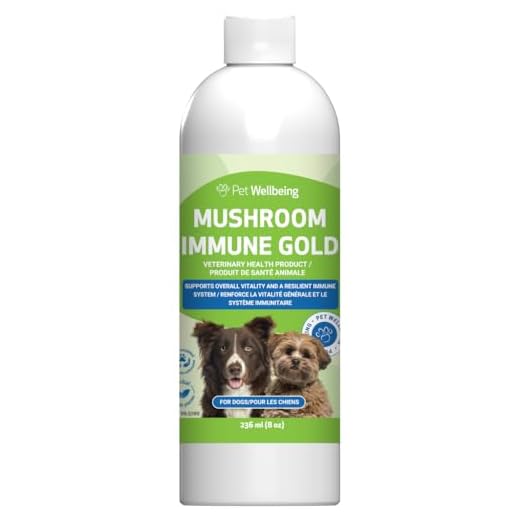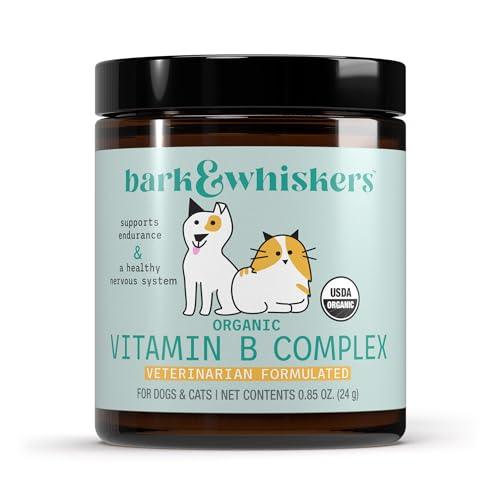




Noticing that your furry companion has a habit of showering you with wet kisses? This behaviour often stems from a deep-rooted instinct. Canines have an innate tendency to express affection and bond through this action. It’s their way of showing trust and love, similar to how they would interact with their pack in the wild.
When my own four-legged friend first joined my life, I was curious about this behaviour. Initially, I thought it might just be a quirky habit, but I soon learned that it serves multiple purposes. For instance, in puppyhood, dogs rely on licking as a means of communication with their mothers and littermates. This early experience shapes their interactions with humans later on.
Additionally, the act of licking releases endorphins, which create feelings of comfort and happiness for them. So, every time your companion gives you a gentle lick, it’s not just about affection; it’s also a way for them to feel good. If your pet is particularly enthusiastic, it might even be a playful invitation for interaction or attention. Understanding these nuances can help strengthen the bond between you and your furry friend.
Understanding the Affectionate Behaviour
When my furry companion presses his tongue against my skin, it’s more than just a playful gesture. This behaviour often stems from a deep-seated instinct rooted in their ancestry. In the wild, canines would lick their pack members to show submission or affection. So, when he chooses to give me a quick wash, it’s a sign of trust and connection. Observing this, I realised that responding positively–like petting him or speaking softly–reinforces this bond.
Communication Through Taste
Every time I notice my four-legged friend giving my hand a thorough grooming, I think about how he perceives the world. Their sense of taste is intricate; they gather information about their surroundings through their mouths. If he licks me after a long day, it might be his way of checking in, tasting the sweat or the faint scent of food. It’s fascinating to consider how his actions are driven by curiosity and the need to understand his environment better.
Seeking Comfort and Reassurance
There have been moments when I’ve felt under the weather or stressed. In those times, my canine buddy often comes over, showering me with licks. This behaviour isn’t just random; it’s a comforting act for both of us. It seems he senses my mood and responds by offering solace. I’ve learned that during these interactions, maintaining a calm demeanour can help him feel secure, reinforcing a nurturing atmosphere. Our bond strengthens through these affectionate exchanges, making both of us feel better.
Understanding Canine Communication Through Licking
Observing how a pet interacts by using its tongue offers valuable insights into its emotional state and intentions. This behaviour often signals affection, submission, or even a request for attention. Noticing the context can reveal much about what your companion is trying to convey.
Types of Licking Behaviours
| Type | Description |
|---|---|
| Affectionate | Tender gestures towards owners or family members, indicating love and bonding. |
| Submissive | A sign of respect, often seen in interactions with more dominant animals or humans. |
| Exploratory | Using the tongue to investigate surroundings, including tastes and scents. |
| Stress Relief | Comforting itself in stressful situations by licking its own body or objects. |
Understanding Context
Recognising the situation can enhance your understanding of what your furry friend is expressing. For example, after a walk, a flurry of tongue action might simply mean they are excited or happy. Alternatively, if your pet approaches with a gentle lick during a tense moment, it could be trying to calm both itself and you.
Feeding your companion nutritious meals can also influence its behaviour. Ensuring a balanced diet contributes to overall well-being, which may reduce anxiety-driven licking. For instance, choosing the best dog food for shitzu can enhance mood and disposition.
The Role of Licking in Bonding with Your Canine Companion
Licking serves as a key mechanism for establishing and reinforcing connections with your furry friend. It’s a behaviour that transcends mere affection, playing a significant role in the emotional landscape of your relationship.
Here’s how this behaviour strengthens your bond:
- Emotional Connection: When your pet engages in this action, it releases oxytocin, the same hormone that fosters attachment in humans. This chemical reaction enhances feelings of love and trust between you both.
- Social Interaction: This action mimics the behaviours observed in packs, where canines groom each other to maintain group harmony. By reciprocating this behaviour, you enhance your social status within their eyes.
- Stress Relief: Engaging in this act can reduce anxiety for both you and your companion. The rhythmic motion and physical contact provide comfort, creating a soothing experience for both parties.
- Reinforcement of Training: When associated with praise or positive reinforcement, this behaviour can reinforce training efforts. It signals approval and can encourage your companion to repeat behaviours that earn affection.
Pay attention to the context in which this behaviour occurs. Recognising the moods and situations can enhance your understanding of your companion’s emotional state. For instance:
- If your friend approaches you after a long day and engages in this action, it could indicate a desire for comfort and reassurance.
- During playtime, if they exhibit this behaviour, it may signal excitement and joy in your shared moments.
Ultimately, embracing this behaviour can lead to a more profound connection. Respond with affection and attention to cultivate a positive feedback loop that strengthens your bond over time.
How Licking Reflects Your Canine’s Emotions
When my furry friend gently nudges my hand with her tongue, it’s more than just a physical gesture. This behaviour often signifies affection and trust. Each time she does this, I feel a warm connection that reassures me of her love. It’s fascinating how such a simple action can convey a spectrum of feelings.
Affection and Comfort
In moments of relaxation, my companion often approaches with a soft lick on my cheek. This is her way of expressing comfort and joy in my presence. Canines have a natural instinct to seek closeness with those they trust, and this act often emerges during bonding moments. If your pet displays similar behaviour, it likely reflects their contentment and a desire to strengthen your emotional link.
Anxiety and Stress Relief
Interestingly, I’ve noticed that my pal sometimes resorts to licking when she’s feeling anxious, particularly during thunderstorms or loud noises. This behaviour seems to serve as a self-soothing mechanism. If your pet exhibits this response, providing a calm environment and reassurance can help alleviate their stress. Understanding these signals fosters a deeper bond and allows for better communication between you and your furry companion.
Health Benefits of Canine Salivation: What You Should Know
The act of salivating can contribute to your well-being in several ways. Research indicates that exposure to canine saliva may enhance mood and reduce stress levels. This occurs due to the release of oxytocin, often referred to as the ‘love hormone’, which is triggered during affectionate interactions. Spending time with a furry friend can elevate your happiness and create a sense of calm.
Immune System Support
Regular interactions with pets can strengthen your immune system. Studies show that being in close contact with animals can lead to a lower incidence of allergies and asthma, particularly in children. The bacteria present in saliva can help in developing a more robust immune response, leading to a healthier lifestyle overall.
Emotional Healing
Salivation can also play a role in emotional support. Many individuals find comfort in the companionship of their pets, which can alleviate feelings of loneliness and depression. Engaging with your four-legged friend can provide a sense of purpose and belonging, making it an essential component of emotional well-being.
Training Your Canine Companion to Show Affection Appropriately
Set clear boundaries from the start. If your furry friend tends to express affection through excessive mouth contact, redirect that behaviour immediately. A simple “no” followed by a rewarding alternative, like sitting calmly or offering a paw, can help establish a more appropriate way to connect.
Positive Reinforcement Techniques
Utilise treats and praise to reinforce good behaviour. When your pet approaches you and refrains from using their mouth, reward them with a treat or verbal praise. This encourages the desired behaviour, making it clear that calm interactions lead to positive outcomes.
Understanding Triggers
Observe what prompts the licking. Is it when you’re busy or stressed? If so, your companion might be responding to your emotions. Addressing the root cause can help manage this behaviour. Create a calm environment during stressful moments, allowing your canine friend to feel secure without resorting to mouth contact for reassurance.
Consistency is key. Make sure all family members apply the same rules when it comes to affection. This clarity will help your companion understand what is acceptable, leading to a healthier bond between you both.
When Licking Becomes a Concern: Signs to Watch For
Monitor behaviour for signs that suggest excessive grooming or mouth contact may signal discomfort or anxiety. It’s crucial to distinguish between normal affection and potentially problematic actions.
Signs of Distress
- Persistent Behaviour: If the grooming continues for extended periods, it may indicate stress or underlying health issues.
- Skin Irritation: Look for redness, swelling, or sores on the surface where the licking occurs, suggesting an allergic reaction or infection.
- Change in Appetite: A noticeable decrease in food intake can indicate emotional distress or illness.
- Excessive Vocalisation: Increased barking or whining alongside licking behaviour may signify anxiety or discomfort.
Health Concerns
- Gastrointestinal Issues: Frequent lapping at surfaces may be a sign of nausea or stomach problems.
- Dental Health: Pay attention to oral hygiene; excessive attention to the mouth area could indicate dental pain or gum disease.
- Allergies: Excessive mouthing can be linked to allergic reactions, necessitating a vet’s assessment.
If any of these signs arise, consulting a veterinarian is advisable. Early intervention can prevent further complications. Understanding the reasons behind these behaviours ensures a healthier and happier companionship.








